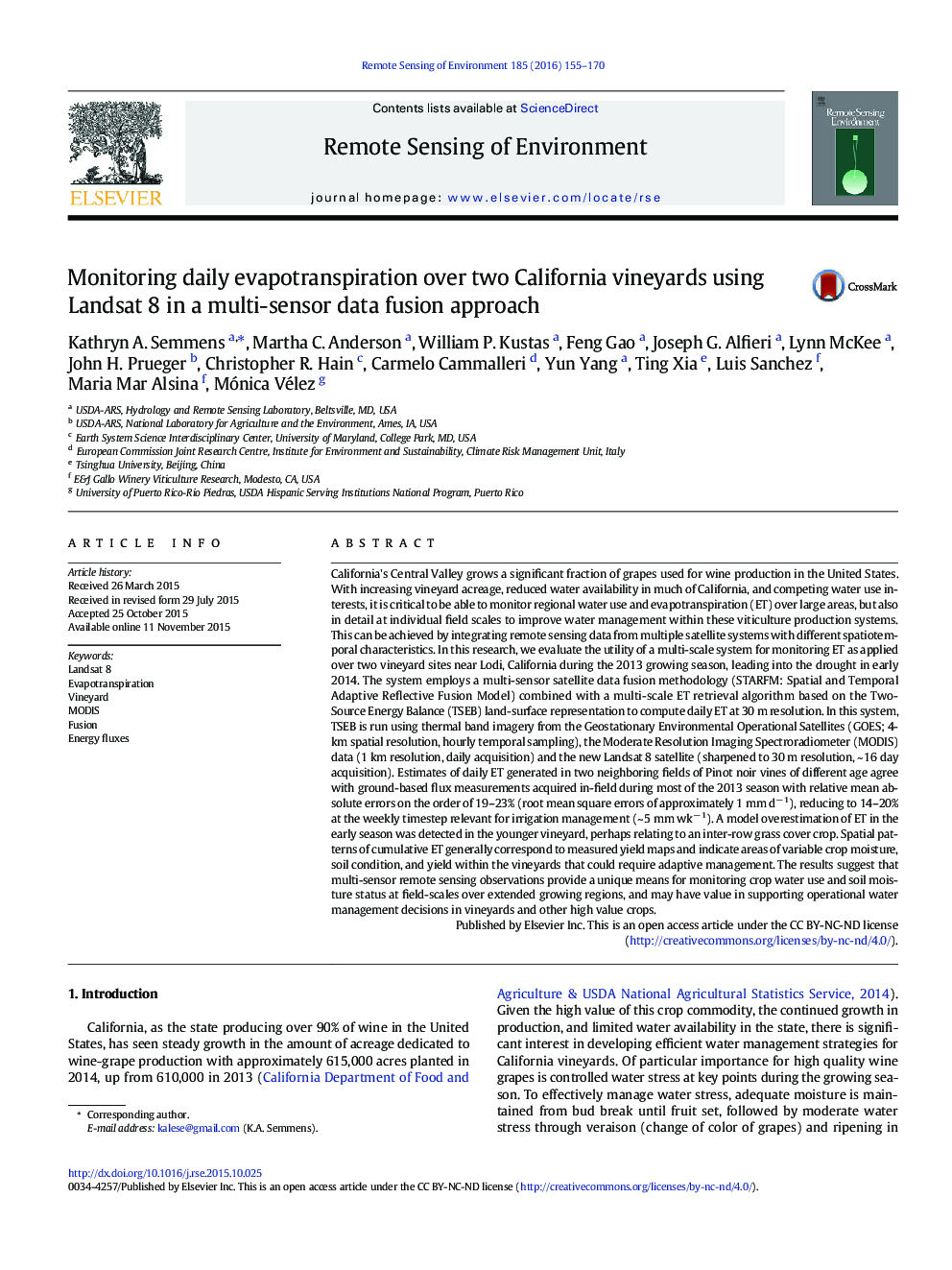| کد مقاله | کد نشریه | سال انتشار | مقاله انگلیسی | نسخه تمام متن |
|---|---|---|---|---|
| 6345003 | 1621215 | 2016 | 16 صفحه PDF | دانلود رایگان |
- Multi-scale, multi-sensor fusion methodology estimates vineyard evapotranspiration.
- Combining Landsat 8, MODIS, and GOES data provides daily field scale ET estimates.
- Modeled surface energy fluxes agree well with ground flux measurements.
- Spatial distribution of ET corresponds with yield estimates.
- ET overestimation in early season may be due to cover crop between vines.
California's Central Valley grows a significant fraction of grapes used for wine production in the United States. With increasing vineyard acreage, reduced water availability in much of California, and competing water use interests, it is critical to be able to monitor regional water use and evapotranspiration (ET) over large areas, but also in detail at individual field scales to improve water management within these viticulture production systems. This can be achieved by integrating remote sensing data from multiple satellite systems with different spatiotemporal characteristics. In this research, we evaluate the utility of a multi-scale system for monitoring ET as applied over two vineyard sites near Lodi, California during the 2013 growing season, leading into the drought in early 2014. The system employs a multi-sensor satellite data fusion methodology (STARFM: Spatial and Temporal Adaptive Reflective Fusion Model) combined with a multi-scale ET retrieval algorithm based on the Two-Source Energy Balance (TSEB) land-surface representation to compute daily ET at 30 m resolution. In this system, TSEB is run using thermal band imagery from the Geostationary Environmental Operational Satellites (GOES; 4-km spatial resolution, hourly temporal sampling), the Moderate Resolution Imaging Spectroradiometer (MODIS) data (1 km resolution, daily acquisition) and the new Landsat 8 satellite (sharpened to 30 m resolution, ~ 16 day acquisition). Estimates of daily ET generated in two neighboring fields of Pinot noir vines of different age agree with ground-based flux measurements acquired in-field during most of the 2013 season with relative mean absolute errors on the order of 19-23% (root mean square errors of approximately 1 mm dâ 1), reducing to 14-20% at the weekly timestep relevant for irrigation management (~ 5 mm wkâ 1). A model overestimation of ET in the early season was detected in the younger vineyard, perhaps relating to an inter-row grass cover crop. Spatial patterns of cumulative ET generally correspond to measured yield maps and indicate areas of variable crop moisture, soil condition, and yield within the vineyards that could require adaptive management. The results suggest that multi-sensor remote sensing observations provide a unique means for monitoring crop water use and soil moisture status at field-scales over extended growing regions, and may have value in supporting operational water management decisions in vineyards and other high value crops.
Journal: Remote Sensing of Environment - Volume 185, November 2016, Pages 155-170
